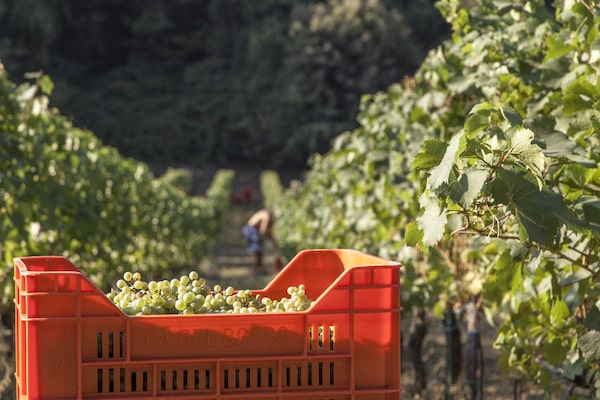
The close association with Champagne is a significant challenge faced by the 123 members of the Consorzio Franciacorta, which is responsible for 19.5 million bottles sold each yearSupplied
Located in the Lombardy region, Franciacorta is often called Italy’s answer to Champagne because of its ability to produce exquisite traditional method sparkling wines from chardonnay, pinot noir and pinot blanc grapes. Today its winemakers hope to cast off comparisons with its popular French rival by creating its own identity.
The close association with Champagne is a significant challenge faced by the 123 members of the Consorzio Franciacorta, which is responsible for 19.5 million bottles sold each year. They are the top producers of classic, bottle fermented wine in Italy, but don’t have a unique selling proposition because their wines are made in the exact image of the world’s most famous sparkling wine. More challenging still, for both makers of Franciacorta and Champagne, wine lovers around the world are increasingly embracing the affordable and fruity charms of Prosecco, which accounted for one in three bottles of sparkling wine consumed in Canada in 2021.
Canadian wine lovers might know Ca’ del Bosco or Bellavista, the two most popular brands produced in Franciacorta. With only 11 per cent of Franciacorta wines sold outside of Italy, the success of these brands suggests the popularity of their label is the selling point, not the Franciacorta denomination.
In a bid to define Franciacorta – and inject regional identity into its wines – the producer organization worked with wine writer Alessandro Masnaghetti to precisely map the region to better understand its diverse landscape, spread across 19 villages, with various hillsides, expositions and elevations up to 400 metres as well as fertile plains and assorted soil compositions. After three years of exploration, Masnaghetti, who had previously documented the regions of Tuscany and Piedmont, identified 134 zones in the appellation.
The news report announcing 134 sub-regions in Franciacorta, a region that covers roughly 2,800 hectacres, inspired several raised eyebrows from critics and marketers. “It’s utterly ridiculous. Nobody cares about Franciacorta that much,” said American wine writer W. Blake Gray on wine-searcher.com.
“Everybody thinks greater regional specificity is going to allow them to charge more for their wines,” Gray continued. “That’s because they spend too much time listening to the wine education industry, and not enough listening to consumers.”
As I see it, the value of these 134 tiny zones isn’t related to marketing. Producers in Franciacorta are aware that they still need to get the majority of wine lovers around the world to know they exist. Without the name recognition of beloved Italian appellations, such as Chianti Classico, Barolo or Brunello di Montalcino, or the big Champagne brands, they are looking for a way to tell their story. New sub-regions and a brand identity are strong signals that they are looking to up their game.
These sub-regions are a starting point for research and development, for local winemakers to focus on small-batch wines that help the region identify which varieties work best in various sites, which types of clones and rootstocks create the best wine. That information goes to Consorzio members who work together to ensure their quality continues to improve while carving out Franciacorta’s own niche in the world of wine.